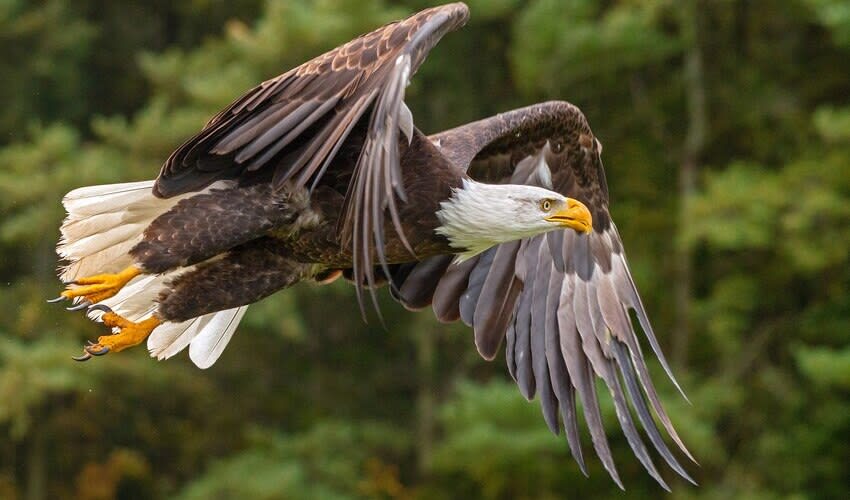Accipitriformes
Hawks, eagles, and kites. Soaring high in the skies using warm thermals to conserve energy
Accipitriformes is an order that includes some of the most formidable diurnal birds of prey, such as hawks, eagles, ospreys, and some species of vultures. These birds can spot potential prey with exceptional vision while soaring at great heights. Their eyesight is among the sharpest in the animal kingdom, allowing them to detect even the slightest movements on the ground or in water from a considerable distance.
Accipitriformes are equipped with strong, curved beaks designed for ripping and tearing flesh, a necessary adaptation for their carnivorous diet. Their talons are equally formidable, sharp, and powerful, enabling them to snatch up prey with precision and strength.
These birds are not just powerful hunters but also highly skilled aviators. They possess long wings that are optimized for both flapping flight and soaring. Many species use thermals—rising currents of warm air—to glide effortlessly as they search for food, conserving energy when a chase becomes necessary.
Most species within Accipitriformes are obligate carnivores, meaning their diet consists exclusively of meat. They play a critical role in their ecosystems as top predators, regulating the populations of their prey and ensuring a healthy balance in nature.
Socially, many Accipitriformes are monogamous and live in pairs, often returning to the same nesting sites year after year. Their nests, which can be found in high trees, on cliff faces, or even on human-made structures, are typically reused and added to each breeding season, resulting in some structures that are massive in size.
These birds are widely distributed, inhabiting various environments across all continents except Antarctica. Each species has adapted to thrive in its specific habitat, from dense rainforests to arid deserts, from high mountain regions to open grasslands and coastal areas.
Conservation efforts for these birds vary in approach and effectiveness. Protective legislation and habitat conservation have led to a remarkable recovery for some, like the bald eagle in North America. The struggle is ongoing for others, and it is only through continued conservation efforts that they will be preserved for future generations.
Families in this order
Feed on a range of prey, with some feeding on carrion, but all have a nasty hooked bill
These gawky hawks like to socialize with each other and humans, habitually chilling around water bodies
A long-legged bird with a stunning black feather crest on its back head




